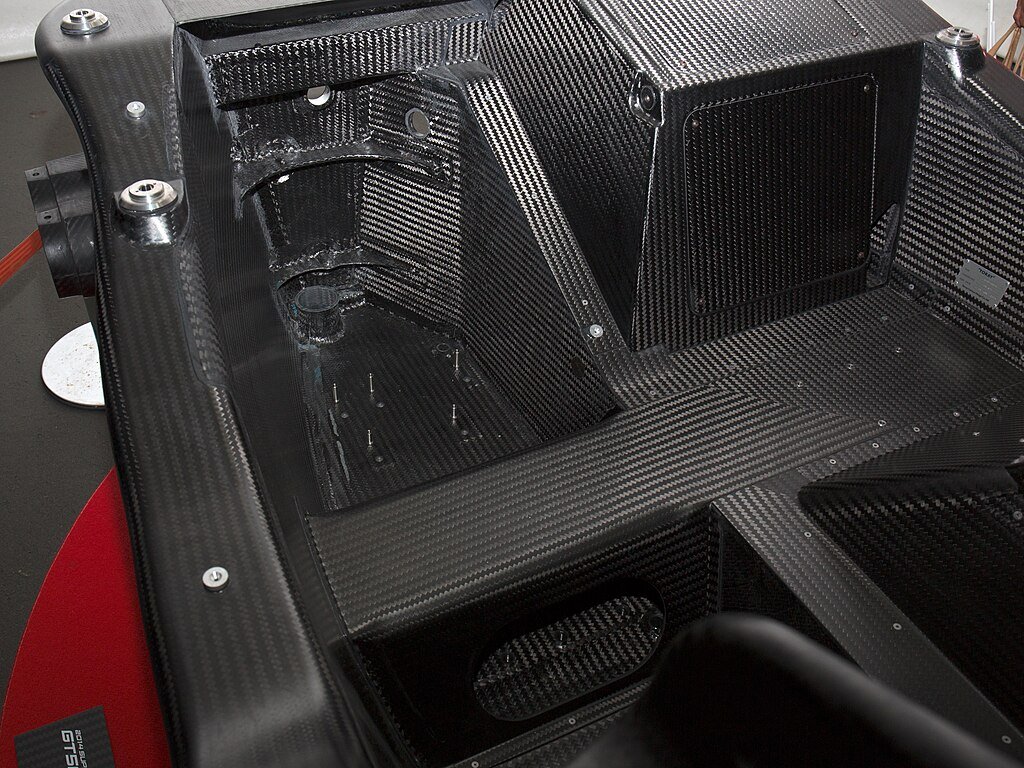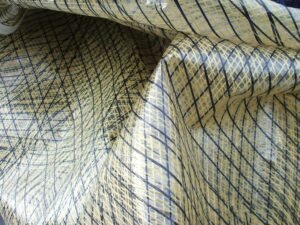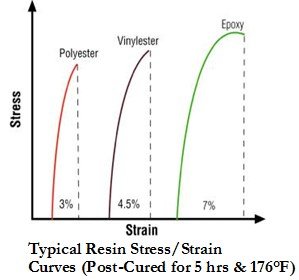Composites Basics: How motorsport performance improved with Advanced Materials
The world of motorsport is a perpetual high-speed laboratory for automotive innovation, where the boundaries of material science and engineering are continually pushed forward. Among the most revolutionary contributions to racing technology in recent decades has been the integration of composite materials. These advanced materials have not only transformed the construction and performance of racing vehicles but also their safety standard.
Table of Contents
- Introduction
- Understanding Composites in Motorsport
- The Role of Composites in Motorsport
- Manufacturing and Designing with Composites
- Challenges and Limitations of Composites in Motorsport
- Advancing Your Knowledge in Composites
- Conclusion
Introduction
In motorsport, the quest for speed and efficiency is relentless. As teams and manufacturers vie for supremacy, the adoption of composite materials has become a cornerstone of competitive racing. These materials, known for their remarkable strength-to-weight ratios, have catalyzed innovations across various racing categories, from Formula One to touring cars and endurance racing. This blog post delves into the basics of composites in motorsport, exploring their properties, applications, and the profound impact they have on the sport.
Understanding Composites in Motorsport
What are Composites?

Composite materials, in the context of motorsport, refer to engineered materials made from two or more constituent materials, reinforcement (fibers) and matrices (resin) with significantly different physical or chemical properties. When combined, these materials produce a material with characteristics different from the individual components. The most common composites in motorsport include carbon fiber reinforced polymers (CFRP), fiberglass, and Kevlar.
- Carbon Fiber: Renowned for its strength and lightweight properties, carbon fiber is a staple in race car body and structural components.

- Fiberglass: Used for its durability and cost-effectiveness, fiberglass is often found in less critical parts that still benefit from reduced weight.

- Kevlar: Best known for its impact resistance, Kevlar is used in areas of the vehicle where flexibility and durability under stress are paramount, like fuel tanks.

The most common matrices in motorsport include polyester, vinyl ester and epoxy resins.

Properties of Composites
Composites are chosen for their unique set of properties, which can be tailored according to specific needs in motorsport:
- High Strength and Stiffness: Composites can be engineered to achieve high strength with minimal weight, crucial for the structural integrity of high-speed racing vehicles.
- Lightweight: Reducing the overall weight of a race car significantly enhances its speed and agility.
- Durability: Composites are resistant to corrosion, fatigue, and changes in temperature, making them ideal for the demanding conditions of motorsport.
- Customizability: The versatility of composites allows for specific engineering adjustments to fit the unique aerodynamics and design specifications of racing vehicles.
These properties make composites an indispensable part of modern motorsport engineering, providing a competitive edge that is continuously refined.
The Role of Composites in Motorsport
Enhancing Vehicle Performance
The integration of composite materials into motorsport vehicles has revolutionized performance in several key areas:
- Weight Reduction: One of the primary benefits of using composites like carbon fiber is the significant reduction in weight. Traditional materials like steel and aluminum, while strong, are much heavier compared to composites. By replacing these materials with composites, engineers can reduce the vehicle’s overall weight, which in turn enhances acceleration, top speed, and fuel efficiency.
- Improved Aerodynamics: Composites allow for more intricate and precise designs, which can be optimized for aerodynamics. The flexibility in shaping composite materials means that engineers can create smoother, more aerodynamic surfaces that reduce drag and increase downforce. This is particularly evident in the design of front and rear wings, diffusers, and other aerodynamic components.
- Enhanced Structural Integrity: Despite their lightweight nature, composites like carbon fiber provide exceptional strength and stiffness. This allows for the construction of components that can withstand the high stresses and forces experienced during high-speed racing, without compromising on safety or performance. The monocoque structure, a single-piece shell made from carbon fiber composites, is a testament to this, providing both rigidity and crash protection.
- Heat Resistance: Composites can be engineered to resist high temperatures, making them ideal for components exposed to intense heat, such as brake ducts, engine covers, and exhausts. This property ensures that the performance of these parts remains consistent even under extreme racing conditions.
The combination of these factors results in a vehicle that is not only faster and more efficient but also more responsive and easier to handle, giving drivers a significant edge on the track.
Safety Enhancements

Safety is paramount in motorsport, and composite materials play a crucial role in advancing protective measures for drivers:
- Crash Protection: The ability of composite materials to absorb and dissipate energy upon impact is a critical safety feature. In the event of a collision, carbon fiber structures can crush and deform in a controlled manner, absorbing much of the impact energy and reducing the forces transmitted to the driver. The halo device, now mandatory in Formula One, is made using composite materials to ensure maximum protection for the driver’s head in crashes.
- Fire Resistance: Certain composites are engineered to be fire-resistant, which is crucial for components near the engine and fuel systems. These materials help prevent the spread of flames in case of a fire, providing additional time for the driver to escape and for safety crews to respond.
- Driver Protection Gear: Composites are also used in the construction of helmets, gloves, and other protective gear. For instance, racing helmets made from carbon fiber composites offer superior protection against impacts while being lightweight enough to reduce strain on the driver’s neck during high-speed maneuvers.
- Roll Cages and Safety Cells: The integration of composite materials in roll cages and safety cells enhances the structural integrity of these critical components, providing better protection during rollovers and severe impacts.
Manufacturing and Designing with Composites
The process of manufacturing and designing motorsport components with composites is intricate and demands precision and expertise. This section explores the key considerations and methods involved in bringing these advanced materials to life in the racing world.
Design Considerations

Designing motorsport components with composites involves several critical considerations to ensure optimal performance and durability:
- Material Selection: Choosing the right type of composite is the first step. Engineers must consider factors such as the specific performance requirements, cost, and the environmental conditions the material will be exposed to. For example, carbon fiber is preferred for high-stress components due to its strength and stiffness, while fiberglass might be used for less critical parts where cost-effectiveness is more important.
- Load-Bearing Analysis: Understanding how different parts of the vehicle will bear loads and stresses is crucial. Finite Element Analysis (FEA) is often used to simulate and analyze how components will react under various conditions. This helps in optimizing the design for strength, weight, and durability.
- Manufacturability: The design must also consider the manufacturing process. Some designs that look good on paper might be difficult or expensive to produce. Engineers must balance innovation with practical manufacturing capabilities, ensuring that the parts can be produced within budget and time constraints.
- Integration with Other Materials: Often, composites are used in conjunction with other materials. Designing effective interfaces between composites and metals, for example, requires careful consideration to avoid issues such as galvanic corrosion or differences in thermal expansion.
Manufacturing Processes

The manufacturing processes for composite materials in motorsport are varied and sophisticated, each with its advantages and challenges:
- Layup Process: This is one of the most common methods for manufacturing composite parts. It involves layering sheets of composite fabric, such as carbon fiber, into a mold and then applying resin. The layers are built up to the desired thickness, with each layer oriented to optimize strength in the direction needed. There are two main types of layup:
- Hand Layup: A manual process where layers of composite material are placed in a mold by hand. This method is labor-intensive but allows for precise control and customization.
- Automated Layup: Uses automated machinery to lay down the composite layers. This method is faster and can be more consistent but requires significant investment in machinery.
- Resin Infusion: Also known as Vacuum-Assisted Resin Transfer Molding (VARTM), this process involves placing dry composite fabrics into a mold and then using a vacuum to draw resin through the fibers. This method can produce high-quality, void-free parts and is suitable for complex shapes.
- Autoclave Curing: After layup, many composite parts are cured in an autoclave, a high-pressure oven that applies heat and pressure to the part. This process ensures the resin cures properly and that the part achieves its designed strength and durability. Autoclave curing is critical for high-performance applications, such as Formula One components.
- Resin Transfer Molding (RTM): In this process, preformed dry fibers are placed into a closed mold, and resin is injected under pressure. This method is suitable for producing large, complex parts with high structural integrity.
- 3D Printing: An emerging technology in the production of composite parts is 3D printing, which allows for rapid prototyping and the production of complex geometries that would be difficult to achieve with traditional methods.
Each of these manufacturing processes has its advantages, and the choice of method often depends on the specific requirements of the part being produced, including the desired properties, production volume, and cost considerations.
Future Technologies in Composites
The future of composites in motorsport is promising, with ongoing research and development focused on enhancing material properties and manufacturing techniques:
- Nanocomposites: Incorporating nanoparticles into composite materials can significantly enhance their mechanical properties, such as stiffness, strength, and thermal resistance. This technology could lead to even lighter and more robust components.
- Recyclable Composites: Environmental sustainability is becoming increasingly important. Researchers are developing recyclable composite materials that can maintain high performance while reducing environmental impact. This advancement could revolutionize the lifecycle management of racing components.
- Smart Composites: Embedding sensors and smart materials within composites can provide real-time data on stress, strain, and damage. These smart composites could lead to more proactive maintenance and improved safety by monitoring the condition of critical components during races.
- 3D Printed Composites: The advancement of 3D printing technology allows for the production of complex composite structures with tailored properties. This method can reduce waste and enable rapid prototyping, speeding up the development cycle.
Challenges and Limitations of Composites in Motorsport
While composites offer numerous benefits, their use in motorsport also presents several challenges and limitations. Understanding these issues is crucial for teams and engineers as they strive to balance performance, cost, and practicality.
Cost and Accessibility
- High Material Costs: One of the primary challenges of using composites in motorsport is the high cost of materials, especially carbon fiber. Producing carbon fiber involves a complex process that requires significant energy and specialized equipment, making it much more expensive than traditional materials like steel or aluminum. For top-tier racing teams, this investment can be justified by the performance gains, but it can be prohibitive for smaller teams and amateur racers.
- Manufacturing Expenses: The fabrication of composite parts often requires advanced manufacturing techniques such as autoclave curing and precision machining. These processes are not only costly but also time-consuming, adding to the overall expense of using composites.
- Limited Accessibility: Due to the costs and specialized knowledge required, access to high-quality composite materials and manufacturing capabilities is often limited to well-funded teams and organizations. This disparity can create a competitive imbalance within racing series, where only the top teams can afford to fully leverage composite technologies.
Repair and Maintenance
- Complex Repairs: Unlike metal components, which can often be repaired with straightforward techniques like welding, composite materials require specialized repair methods. Damaged composite parts typically need to be replaced or repaired using specific resins and fabrics, which can be a time-consuming and delicate process. This complexity can lead to longer downtime and higher repair costs.
- Structural Integrity: Assessing the extent of damage to composite materials can be challenging. While surface damage may be visible, internal delamination or micro-cracks can compromise the structural integrity of the part without being immediately apparent. Advanced diagnostic tools, such as ultrasonic testing, are often required to accurately assess and address these issues.
- Maintenance Protocols: Composite components require unique maintenance protocols to ensure their longevity and performance. Teams must be diligent in inspecting for signs of wear and damage, applying protective coatings, and following manufacturer guidelines for care and maintenance.
Advancing Your Knowledge in Composites
For those interested in deepening their understanding of composites in motorsport, in this blog we will share with you several articles explaining about it.
Conclusion
Composites have undeniably transformed motorsport, offering unmatched performance, safety, and innovation. From reducing vehicle weight and enhancing aerodynamics to improving safety and durability, these advanced materials are integral to the future of racing. While there are challenges to overcome, particularly regarding cost and repair complexities, the continued evolution of composite technologies promises even greater advancements in the years to come.



